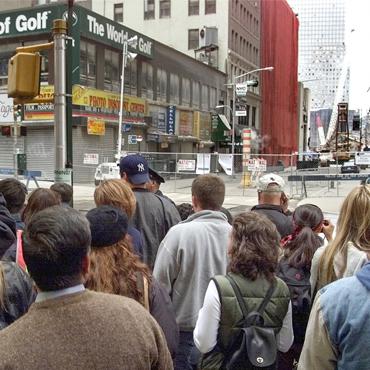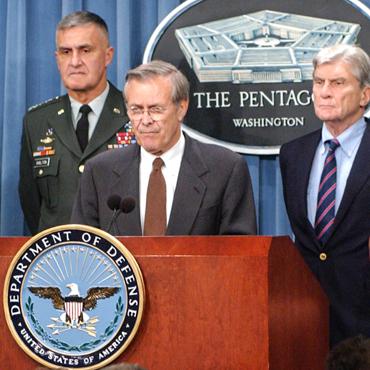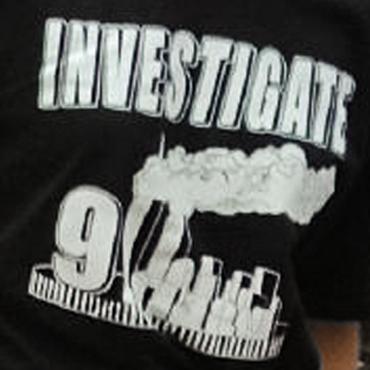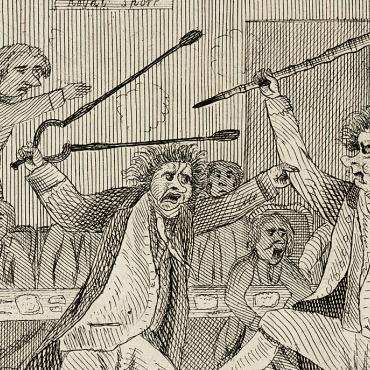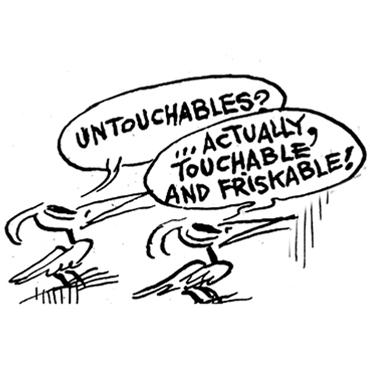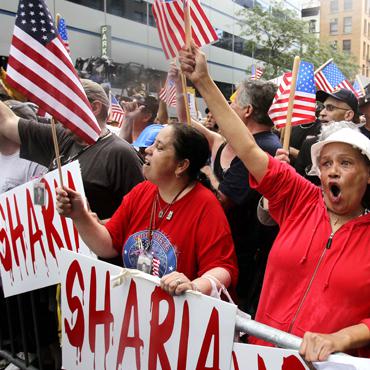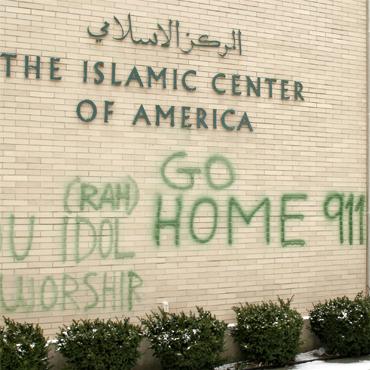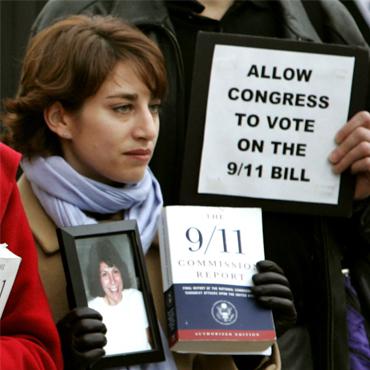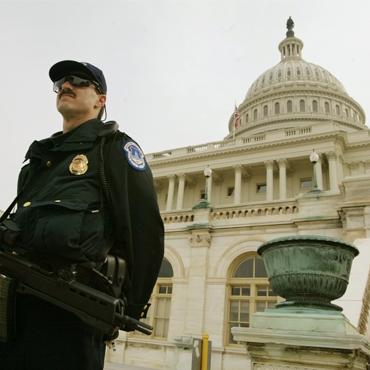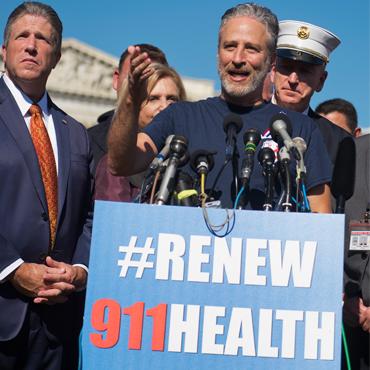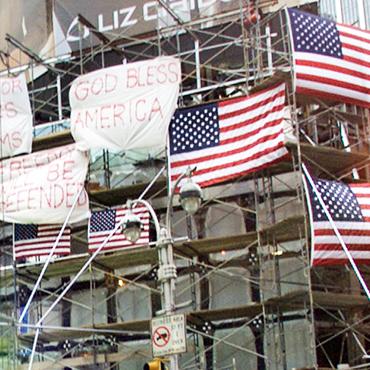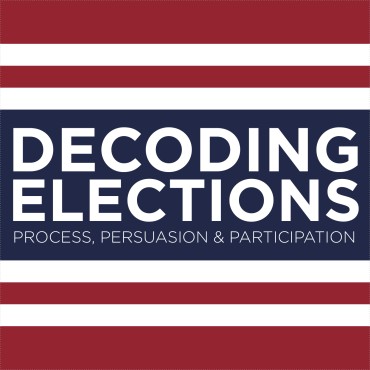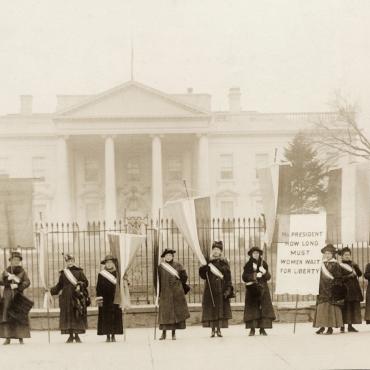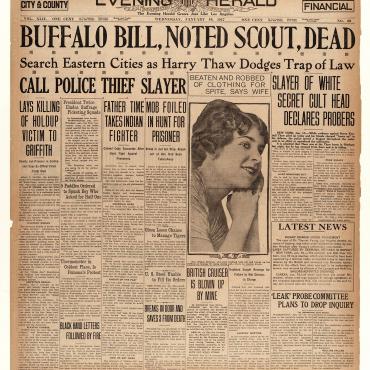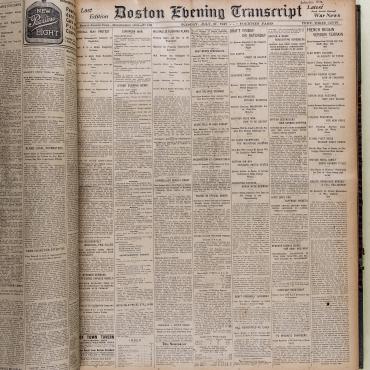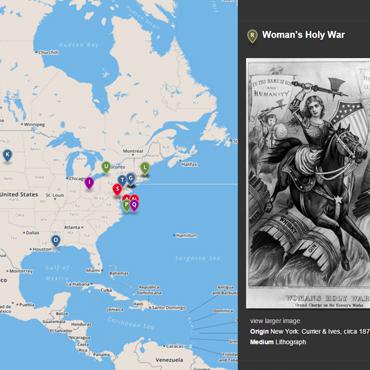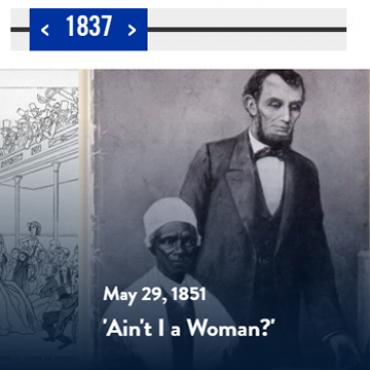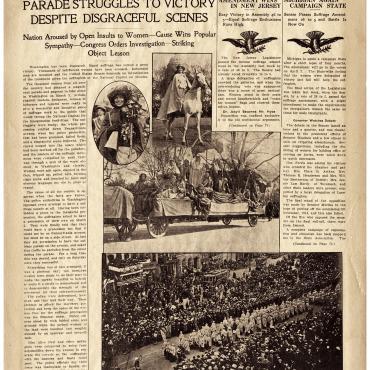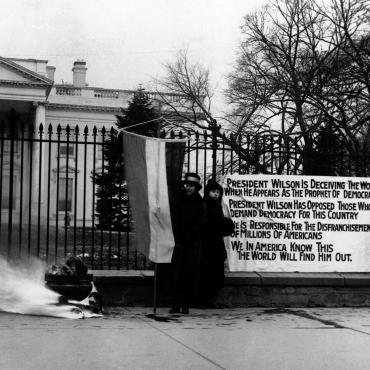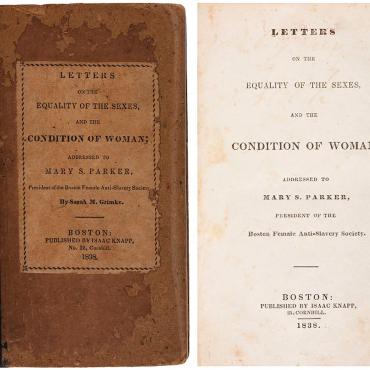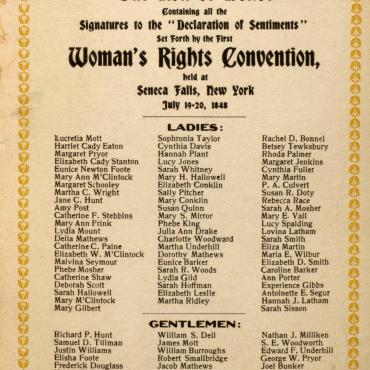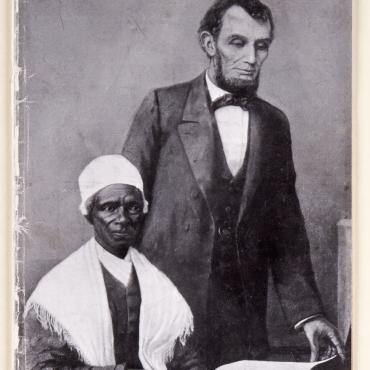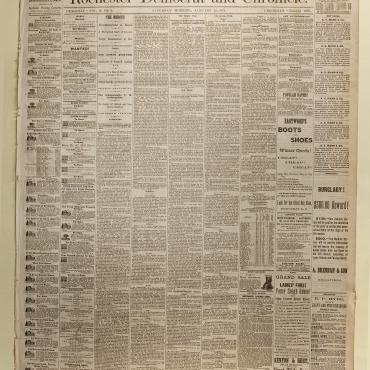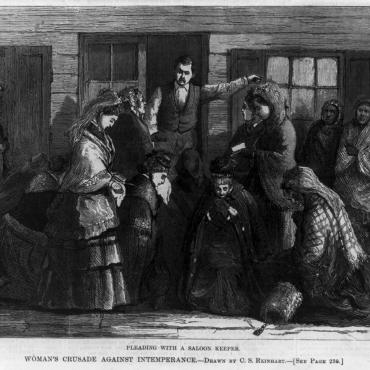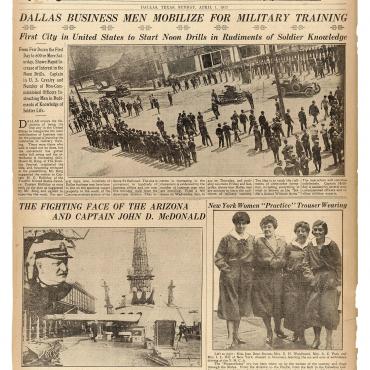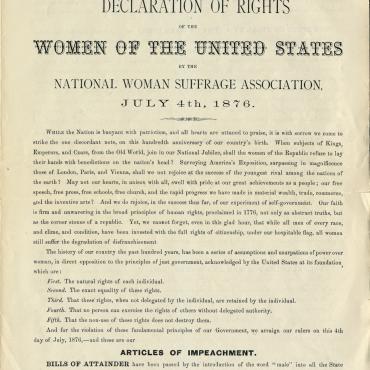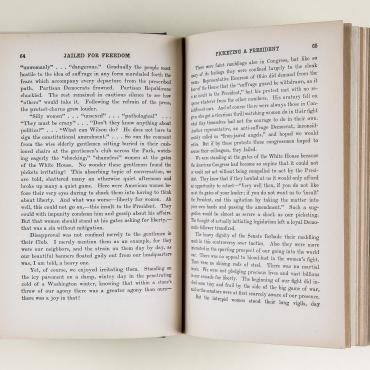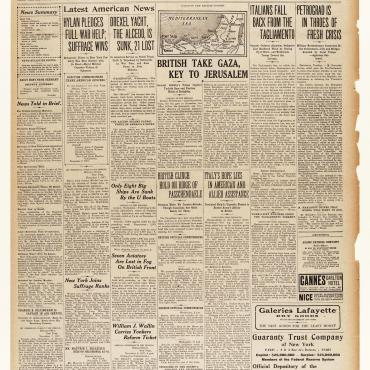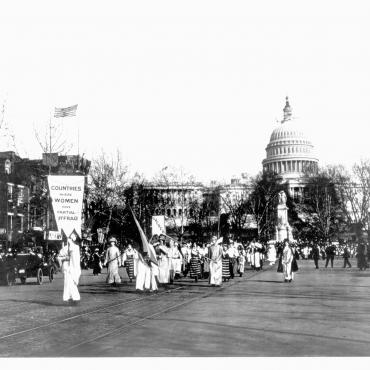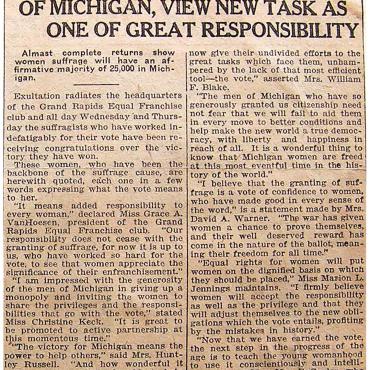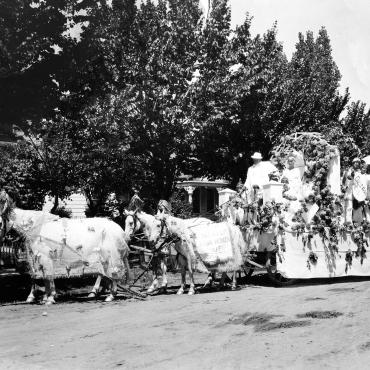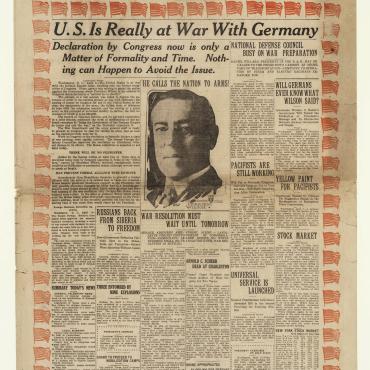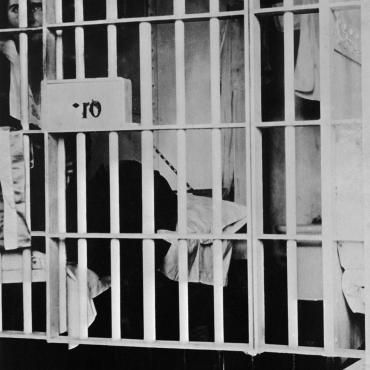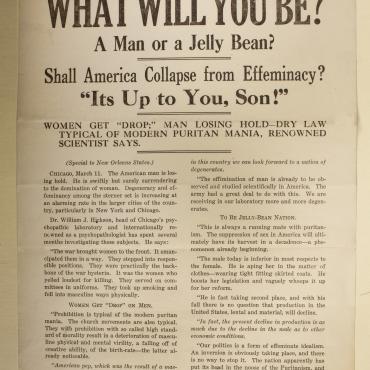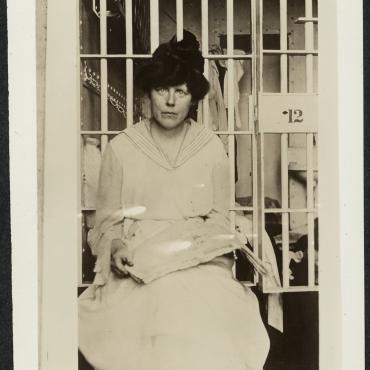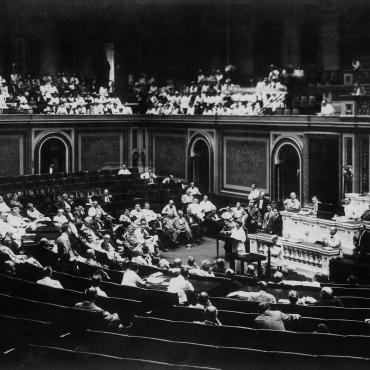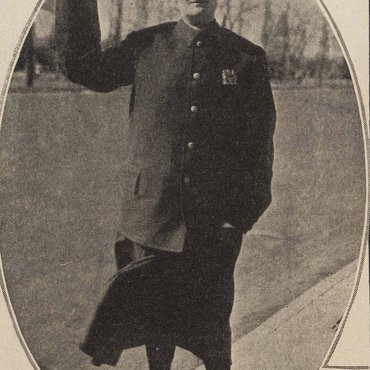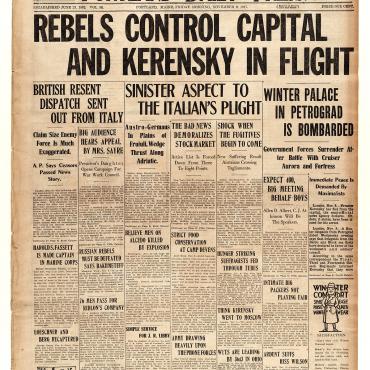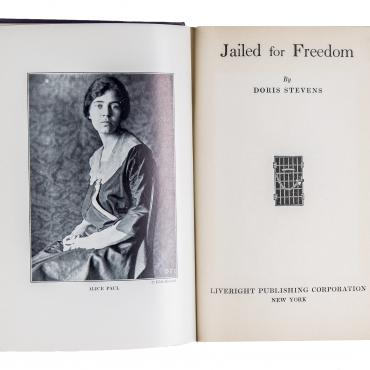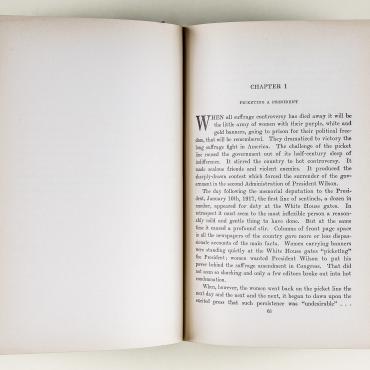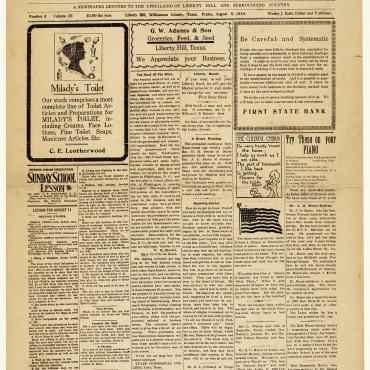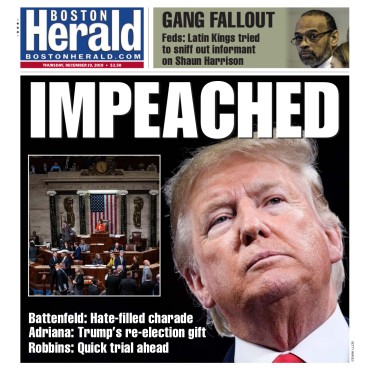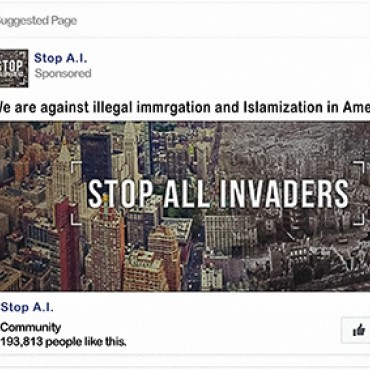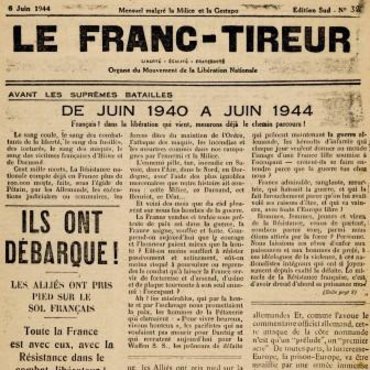1917: Suffragists Target the White House
Should protesters use dramatic tactics at the White House and embarrass the president during a time of war?
Get even more great free content!
This content contains copyrighted material that requires a free NewseumED account.
Registration is fast, easy, and comes with 100% free access to our vast collection of videos, artifacts, interactive content, and more.
NewseumED is provided as a free educational resource and contains copyrighted material. Registration is required for full access. Signing up is simple and free.
With a free NewseumED account, you can:
- Watch timely and informative videos
- Access expertly crafted lesson plans
- Download an array of classroom resources
- and much more!
This Critical Debate is part of a Debate Comparison:
See all Debate Comparisons- National Security
- Protests
- Women's Rights
- World War I
- 9-12
- College/University
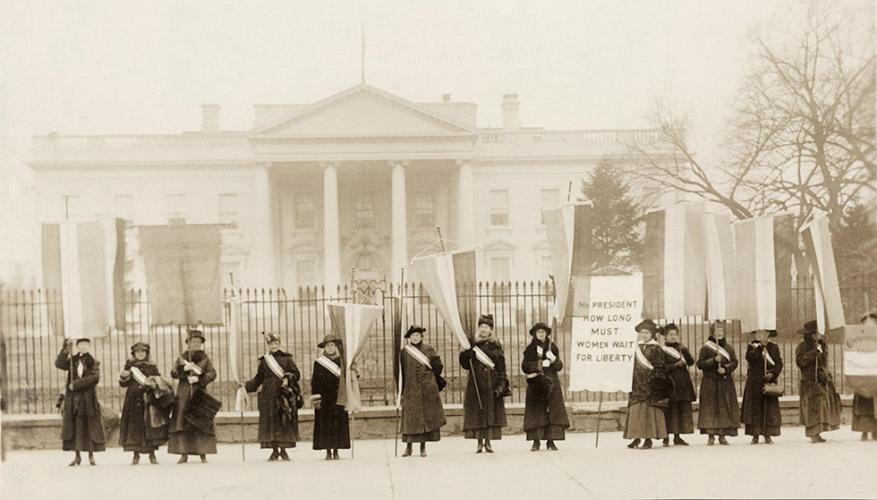
One of the many picket lines suffragists organized outside of the White House in 1917.
- Pass out and read the Suffragists Target case study scenario. Check for comprehension and ask students to identify the First Amendment freedom(s) at issue in this case.
- Break your class into small groups and assign each group one of the people/perspectives. Hand out copies of the Organizing Evidence and Present Your Position worksheets. Give groups 30 minutes to look at the primary sources online and answer the worksheet questions.
- Have each group present their position and arguments. Keep the gallery of case study resources on NewseumED.org open so students can refer to them as they explain their reasoning.
- Case study handout, one per student (download)
- Organizing Evidence and Present Your Position worksheets, one of each per group (download)
- Case study primary sources (below)
- NewseumED Suffrage Advocates Related Resources Pinterest Board (optional)
Should protesters use dramatic tactics at the White House and embarrass the president when the nation is facing a crisis?
While President Woodrow Wilson navigates the country’s heated debate over how to respond to the war in Europe, suffragist Alice Paul wages a battle on the home front for a constitutional amendment to guarantee women the right to vote. Suffragists have been campaigning for decades, but only had a few successes. President Wilson has declined to advocate for them.
To force his participation, Paul launches the first-ever group protest at the White House fence. Protesters stand watch and silently carry signs with slogans such as: “Mr. President, how long must women wait for liberty?” Some address the president as “Kaiser Wilson” – a provocative comparison to the German ruler.
At first, Wilson tolerates the suffragists’ protest. But over time, opponents begin gathering and heckling the women, and the situation becomes embarrassing. Six months into the protest, Wilson orders police to arrest the suffragists for blocking the sidewalks. His actions spark a debate about what forms of protest are appropriate at one of the most symbolic and important buildings in the United States.
Take the role of a historical figure below and find evidence to argue your case.
-
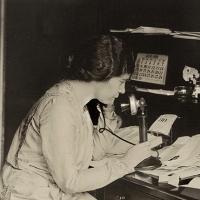 ?Alice Paul founded a new suffrage organization because she believed the traditional techniques of the movement were too cautious.Library of Congress, Manuscript Division, National Woman's Party Records
?Alice Paul founded a new suffrage organization because she believed the traditional techniques of the movement were too cautious.Library of Congress, Manuscript Division, National Woman's Party RecordsAlice Paul
The woman suffrage movement needs to try new strategies and act boldly if it is to succeed. Picketing the White House will draw attention to our cause and highlight the hypocrisy of the president’s support for democracy abroad while ignoring women’s disenfranchisement here at home.
"The method you ask us to pursue did not win a point last year or this, but at the national Capitol the situation is more hopeful because the party in power is afraid of a method that actually costs them votes."
-
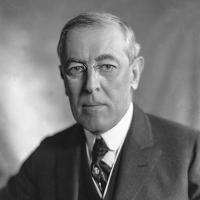 ?President Wilson initially treated the female pickets politely before ordering them to be arrested. Months later, he publicly endorsed the women's suffrage amendment.Newseum Collection/Courtesy Dave and Ellen Conboy/William T. Fall Estate
?President Wilson initially treated the female pickets politely before ordering them to be arrested. Months later, he publicly endorsed the women's suffrage amendment.Newseum Collection/Courtesy Dave and Ellen Conboy/William T. Fall EstatePresident Woodrow Wilson
Woman suffrage is an issue for the states to decide. The pickets are a distraction at a time when our nation is facing a serious crisis, and their protests could get out of hand.
"There is a great deal in what Mr. Brisbane [a newspaper editor] says about entire silence on the part of the newspapers possibly provoking the less sane of these women to violent action. My own suggestion would be that nothing that they do should be featured with headlines or put on the front page, but that a bare, colorless chronicle of what they do should be all that was printed."
-
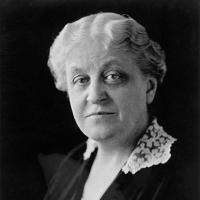 ?
?Carrie Chapman Catt's "winning plan" balanced national and state-level suffrage efforts and avoided the controversial tactics of Alice Paul and her followers.
Library of Congress, Prints & Photographs DivisionCarrie Chapman Catt
The theatrical tactics of the “Silent Sentinels” will only alienate people and antagonize the president as he faces many pressing matters. Our cause will be better served if we act as model citizens, supporting the president and the nation’s war efforts.
"We hoped that our willingness to serve our country even only half armed would appeal to the men with whom you and we must deal in Congress as good and sufficient reason for our enfranchisement."
-
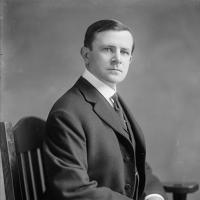 ?Rep. Joseph Walsh, a Republican from Massachusetts, attempted to block the creation of a congressional committee on woman suffrage.Library of Congress, Prints & Photographs Division
?Rep. Joseph Walsh, a Republican from Massachusetts, attempted to block the creation of a congressional committee on woman suffrage.Library of Congress, Prints & Photographs DivisionRep. Joseph Walsh, R-Mass.
The Silent Sentinels should not be taken seriously. All of their nagging does not convince me to support their cause.
The women picketing the White House are “bewildered, deluded creatures with short skirts and short hair."
- Could picketing the White House and targeting the president alienate potential allies?
- Are the protest tactics disrespectful of the president? Does that matter?
- How do the hecklers’ actions affect your decision?
- Should visits from foreign heads of state affect when, where and how people can protest?
-
Common Core State Standards: CCSS.ELA-LITERACY.CCRA.SL.1
Prepare for and participate effectively in a range of conversations and collaborations with diverse partners, building on others' ideas and expressing their own clearly and persuasively.
-
NCSS C3 Framework: D2.Civ.14.6-8 and D2.Civ.14.9-12
6 - 8: Compare historical and contemporary means of changing societies, and promoting the common good. 9 - 12: Analyze historical, contemporary, and emerging means of changing societies, promoting the common good, and protecting rights. -
NCSS C3 Framework: D4.1.6-8 and D4.1.9-12
6 - 8: Construct arguments using claims and evidence from multiple sources, while acknowledging the strengths and limitations of the arguments. 9 - 12: Construct arguments using precise and knowledgeable claims, with evidence from multiple sources, while acknowledging counterclaims and evidentiary weaknesses.

